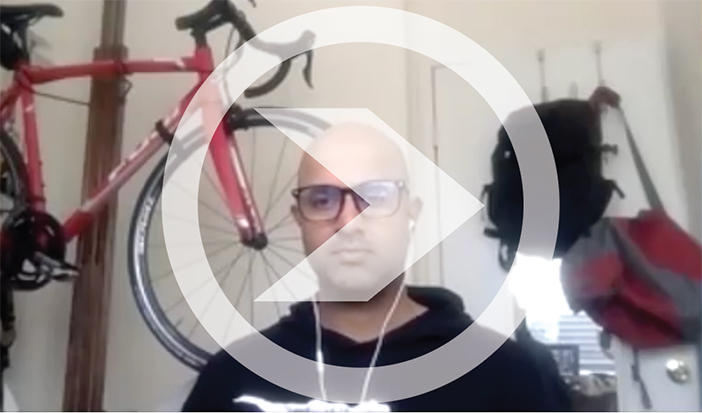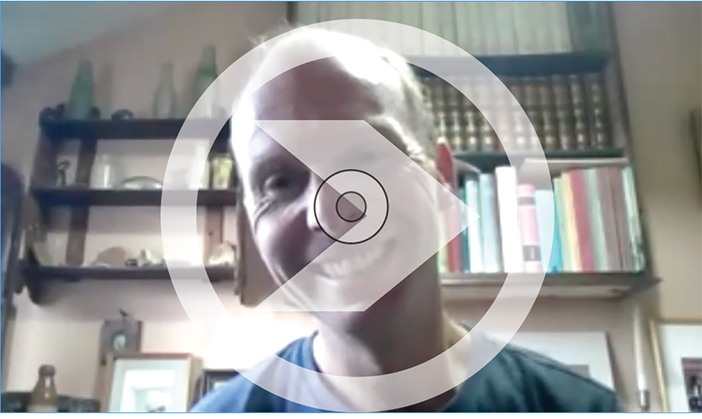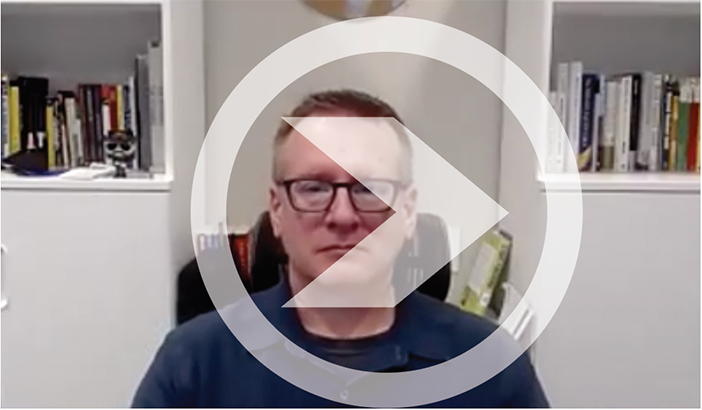It’s likely safe to say that no one is sad to see the end of 2020, and we don’t need to rehash what went down. (For that, check out the “State of the Industry Report,” p 34.) Instead, we gathered a roundtable from across the industry to talk about what we learned and where we go from here.
This conversation, which took place in early December 2020, included Paul Cummings, Strategic Adventures; Rohan Shahani, Challenge Works; Jana Dean, High Life Adventure Park, Ore.; Robert Kemp, WildPlay Adventure Parks, with operations in British Columbia and New York State; Susan Hilde, Camp Merriwood, N.H.; and Scott Andrews, ACCT policy director. We had a separate conversation with Vernon West of Go Ape, which owns 14 adventure parks across 12 states, and we’ve included his thoughts and observations here as well.
Clear and Present Guidelines
The 2020 season was a mixed bag for the adventure industry with some operations not opening at all and others reporting booming business. A key factor in whether operations were able to open was the guidelines provided by local, state, and federal government, if any were provided at all.
Booming business. In Oregon, High Life Adventure Park and its sister operation, High Life Adventures Zip Line Tours, saw strong visitation. “Our first season at the adventure park was insane, business has been booming,” said Jana Dean. “As for the zip line, we’ve had that for over eight years, and this has been our best season yet. I think it has a lot to do with folks staying closer to home and doing more local travel.” High Life’s locations are within an hour or two of Portland.
Camp Merriwood did not open this past summer as the guidelines for camp operation were not provided by New Hampshire health officials until mid-June. “We decided in early May, before the guidelines from the Governor came out, that we just weren’t going to be able to keep our local community and our camp community safe. So, we made the very difficult decision to close [this season],” said Susan Hilde. “We can’t wait until mid-June to find out what the guidelines are, when we open a week or two later. So, we’re hoping to have those guidelines in place by sometime in February or early March at the latest.”
Lack of guidance was decisive. Rohan Shahani of Challenge Works added that the lack of consistent messaging had major impacts on the development of operational policy. “Among my clients last year, maybe 5 percent opened and most of those opened in a day camp capacity. The biggest issue and the big complaint was a lack of consistent messaging at the local, county level, that interacted with the state level, that interacted with the federal level. We don’t need something from the federal government that says, yes, you’re cool to open, but it is important to be consistent across levels when we’re setting up how we craft our own polices.”
He added, though, that guidance is starting to come together for the 2021 season and, as a result, operations are beginning to put together decision timelines in terms of if they can open, and if they do, what it might look like.
Go Ape, with 14 locations across the U.S., tracked differing state and local regulations closely. “I think the West Coast, in particular, by seeing quite a different pattern of Covid and quite a different pattern of policy response through the summer, was more negatively affected,” said Vernon West.
WildPlay, which is primarily based in Canada and also has two operations in New York, was able to operate as a result of clear guidelines from the government. “Hearing talk about the mixed messages and the lack of clarity certainly makes me feel lucky that we’re in the jurisdictions we are because Canada’s a totally different beast here,” said Robert Kemp. “We have very clear mandates from the government. We know exactly what is going on, we know exactly what is changing, and it’s not as much of a moving target.”
Despite the lack of clear guidance at the beginning of the pandemic and uncertainty moving forward regarding vaccine implementation, there is confidence that local organizations are making headway in trying to help guide policy, develop public policy, and lobby states in terms of creating operational guidelines that are both effective and feasible.
The Crystal Ball
While much about 2021 remains unknowable, Go Ape’s West believes that the next year will probably look pretty similar to the way we ended the season in 2020 in terms of Covid restrictions, sanitization protocols, and customer behavior and expectations. So he and other operators are looking at what worked and what didn’t in 2020 as they prepare for the coming year.
Fewer touchpoints. “We’re seeing customer behavior change in a way that I think is positive for their experience and positive for our business that we wouldn’t have otherwise, even if we’ve chit chatted about it in the background,” said Kemp. One of those changes? Getting rid of shared devices, like iPads. “Our Apple lease bill was huge,” he said. And unnecessary. Guests who had not filled out the waiver in advance had no trouble completing the form on their phones instead of using shared devices and creating additional touch points.
Cleaner equipment. One high-touch item that was at the forefront of many a conversation this past spring was gear, harnesses in particular, and how best to clean it. Regardless of manufacturer protocols or any particular opinion on the effectiveness of various cleaning methods on mitigating virus spread, Shahani believes that it’s a good thing and one that consumers are going to continue to expect. “It’s a big win getting people to actually clean their equipment, so it doesn’t smell like sweat and sunscreen,” said Shahani. “I will posit that a clean harness is just better for so many reasons that I don’t need to list.”
Customer focus. The biggest change, however, is in customer service. “The industry tends to put people in groups because it makes it easier to facilitate putting on a harness or giving them some sort of safety briefing or whatever else. While it’s convenient for us, it’s certainly not the best guest service,” said Kemp.
High Life Adventure Park and High Life Adventures Zip Line Tours limited check-in to one family group at a time, improving customer service by allowing staff to focus on the guest in front of them rather than on the line behind, noted Dean. These groups then proceeded onto the course. WildPlay adopted a similar continuous flow model with groups as they arrive. Kemp believes it not only feels better for the guest, but also makes the course function better.
DIY harnessing. To reduce contact between guides and guests, most operations had guests put on their harnesses themselves, with guides talking them through the process. That is something that many commercial operations had struggled to adopt in the past.
Shahani believes it’s a silver lining to the pandemic, as more operations focused on facilitation skills to enable no-contact harness fitting. “I think back to the Huddles in April and John Hines was talking about the three-legged stool. (Operating in the New Normal) Mitigations have to feel effective, and [facilitation]feels effective and it adds the personal touch, it builds connection. So much of risk management is just pure facilitation, and it’s easy for us to forget that,” Shahani said.
More dynamic scheduling. Paul Cummings of Strategic Adventures believes that the lasting change as a result of these modifications is going to be in terms of staffing levels as operations look at more dynamic staffing schedules in order to limit down-time.
“The folks who have been able to adapt and adopt family models or flexible scheduling models or smaller pod models have had fabulous seasons. They’ve been really clear that they’re not going back to prescheduled tours with staff sitting around waiting,” said ACCT’s Scott Andrews.
Operations also identified new revenue streams. Dean of High Life Adventure Park, speaking for many operators, shared that, “We offered gloves and they sold like hotcakes.”
Many operations that had previously offered gloves as an upsell saw a significant increase in sales this season with a little strategic marketing, said Cummings. Others saw increased retail sales as a result of implemented capacity reductions—the additional breathing room in the retail space allowed for more time to browse and increased per customer spend.
New Habits for Customers
Operations changed, and so did human behavior. More people are spending more time outdoors, and discovering they really enjoy it. “They say it takes six months to actually change human behavior,” said Kemp. If that’s so, people have had time to instill a new outdoor habit.
Getting outside. WildPlay had not traditionally operated year-round, but as a result of the changes in customer behavior, they’re giving it a go. “Even though we’re in B.C., in the Northwest, where people aren’t supposed to be made of sugar—you know, if it starts raining, everyone wants to go to the movies or go inside—and they can’t do that, so they’re putting the rain gear on and they’re going and playing, and it’s working out pretty well,” said Kemp.
Night life. High Life is implementing a similar model, now offering “Twinkle Tours” on its zip line and “Glow Climbs” at its adventure park with a focus on getting families outside. “They can’t go to the movies, so let’s get them outside to play at night and do something different,” said Dean.
Diversity happens. The customer behavior changes are not just taking place among the existing clientele; operations are seeing an entirely new customer base show up as they try and escape the house and get outside.
“I do a fair amount of DEI facilitation, and a big obstacle for us has been, ‘these people don’t go outside,’ ‘this isn’t for those people.’ It could be anybody, right? It’s not really a valid statement,” says Shahani. “A lot of that perception has disappeared with the variety of people, the diversity of people that we are seeing from all walks of life.” (For more on diversity in the outdoors, see p. 47)
Seasonal changes. All walks of life is right. With the loss of school and corporate programming, WildPlay saw an entirely different clientele during the month of September. “Those people who had more flexible work schedules, whose kids may have delayed starting school or were going into independent learning pods. Our September business was a completely different business than it has been in the past,” said Kemp.
Health benefits. “It’s just one of those things we’ve known for a long time, right? Shocker, getting outside, being with people, and being active is good for you,” said Shahani. “We’ve spent a lot of time and money trying to prove that in the past. I don’t think there’s anyone who hasn’t read an article in the past nine months about rising suicide rates, rising domestic violence rates, rising problems, just from not being able to do those things. We have this data and I’m hoping that we can reframe this data to show exactly why what we do is worth what we’re asking for it.”
West echoed this. “We know from the research and from our own personal experiences that being out in nature is just wonderful, it’s a balm,” he said.
Screen-time overdose. It’s a benefit and a behavior change that Cummings thinks the industry can capitalize on. He likened the additional screen time we are all getting these days to a kid who got caught smoking and so his parents make him smoke the whole pack. We’ve had the screen time, now it’s time to go back outside.
Fun is habit-forming. “I think the role of the outdoors within the disposable dollar is going to be up structurally,” predicted West. “Clearly there’s some short-term switching because it’s safer to be outdoors than indoors. But actually having consumed the outdoors, many consumers will conclude that this is actually a pretty fun thing to do.”
Looking Ahead
Camp outlook. Are camps and other adventure operations going to require participants to be vaccinated? Probably not, said Hilde. “That’s something we have talked about, and the concern there is that kids have not been included in the trials. So therefore, they don’t really know the effect on kids, and it sounds like kids will be the last ones to receive the vaccine.” (Editor’s Note: As of press time, the Moderna vaccine had been approved for ages 18+, while the Pfizer vaccine had been approved for persons ages 16 and over.)
While camps are determining their plans for 2021, some operations are making the decision to close for good or plan for grand openings.
Permanent closures. “We’ve seen some very traditional, very old programs fold because their client base has evaporated and it’s not coming back. The folks who are dependent on school programs have closed. The folks dependent on corporate programs are gone,” said Andrews of operations in the Seattle area.
New beginnings. Still, there are other operations that are set to launch. “There’s a rumor that there could be three new parks opening in the Puget Sound area in the next 18 months,” said Andrews. “If you’d asked me a year ago if we’d see any new adventure parks, I would have said no—and now it looks like we might have three. I wasn’t expecting new parks because we were seeing a steady downward trend in use over the past four, five years, at least here in the Northwest. Now we’re seeing that go back up, which is a real plus.”
Cummings echoed this, noting the increase in requests for feasibility studies his company is receiving. “People are getting hopeful. People are seeing that there are a lot of people that want to get out there and climb,” he said.
Consolidation of ownership. There may also be a trend of consolidation, said West, as more profitable operations look to strategically expand their footprint, and as some operators coming off a tough year may make the decision to take some cash off the table and retire.
This may also be mirrored by outside interest, West added, in the form of private equity, which has not historically been a player in the sector. But he believes the industry is gaining the critical mass and visibility needed to attract a new level of investment.
Cummings agreed, but believes we’re still a little bit away from seeing that level of funding coming to play in the trees. He expects investors will wait until there is a bit more year-over-year consistency in the industry.
Regulatory Changes
Increasing activity on the regulation front. Most regulatory activity was put on hold in the spring, as most jurisdictions focused on the Covid-19 response. However, now discussions are ramping back up, and Andrews is anticipating lots of new regulation coming out for public comment in the new year.
Virtual participation. One change that he hopes will stick? Virtual meetings. “I was in a Tennessee meeting where there’s normally 12 people—there are 11 board members, by the way—and this time they had 25. They’re admitting that people come to the meetings because they don’t have to drive. Why would you change this? Why would we go back to face-to-face?
“This, it seems to me, is a plus. You get a better mix of voices, and sometimes you hear opinions that you wouldn’t otherwise. It speaks to a more robust public process, which I think for regulation is almost always a benefit.”
As with many of the adaptations undertaken during this Covid-19 year, this has been a change for the better. No one would ever wish for a pandemic, but the aerial adventure industry has evolved and could well emerge stronger than before, with a customer base more firmly committed to the outdoors. And that’s a healthier outcome than anyone could have anticipated last spring.













